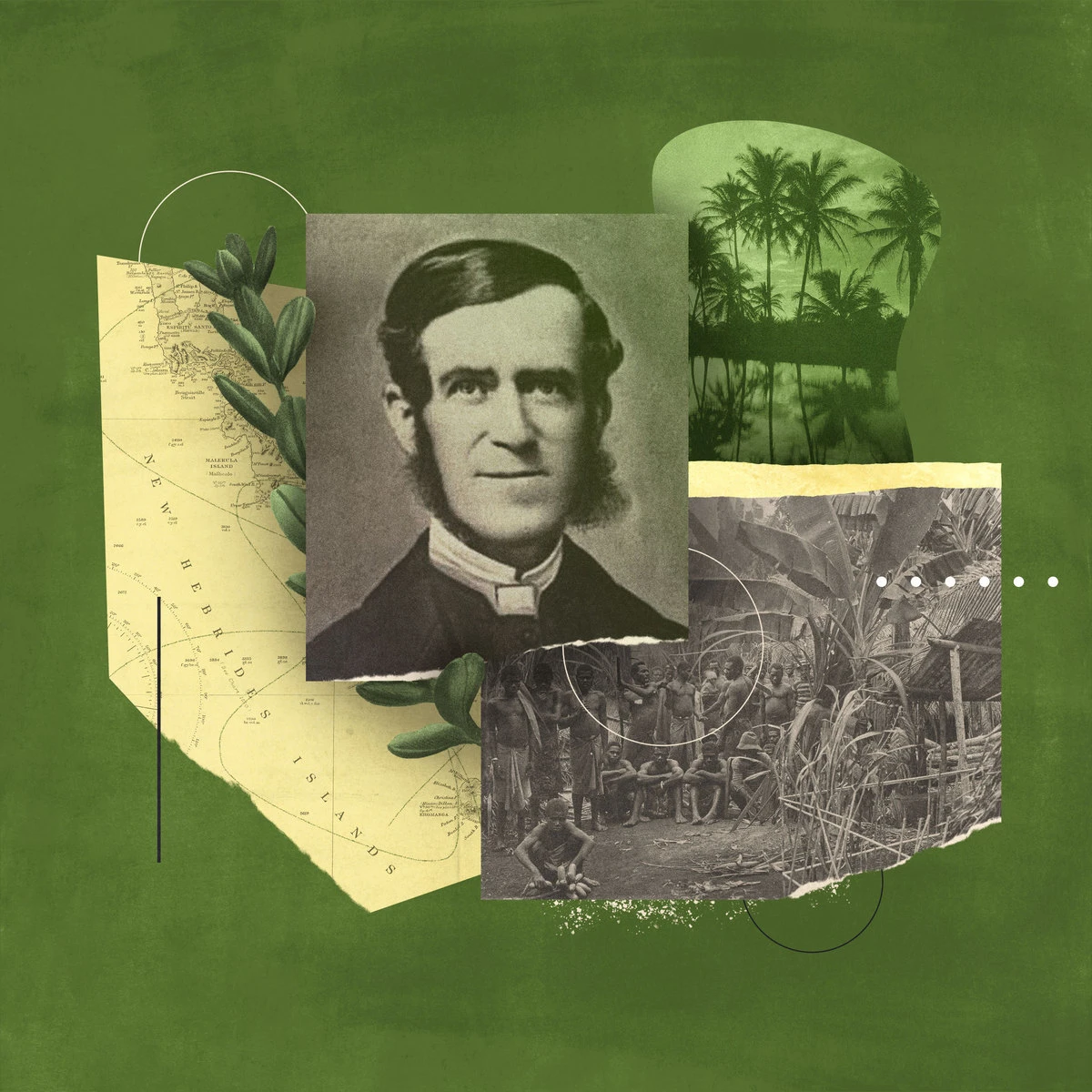Who Was John Geddie?

John Geddie (1815–1872), a Scottish-born Canadian Presbyterian pastor and missionary, became known as “the father of Presbyterian missions in the South Seas.” For twenty-four years, he and his wife, Charlotte, faithfully proclaimed Christ, translated the Scriptures, and planted churches in the New Hebrides islands (now Vanuatu).
When John lay gravely ill as a newborn, his parents promised the Lord that they would devote him to missions if He would spare John’s life. Though they never told him of their vow, reading missionary publications became a consistent part of his upbringing after they immigrated to Pictou, Novia Scotia, in 1816.
Young John was raised in the traditional Scottish Presbyterian way of instruction in Bible and catechism. Though the Geddie children possessed “friendly dispositions,” John was described as having a “very determined spirit, approaching it might be said to obstinacy. If you crossed his disposition, it was not easy to conquer him.” The Lord utilized this persistence to sustain him and his family in the difficult calling that lay ahead.
In 1834, at age nineteen, Geddie professed faith in Christ, and his lifelong acquaintance with missionary stories matured into a passion for foreign missions. During his theological studies, he experienced a protracted period of poor health during which he, like his parents, vowed that if the Lord would restore him to full health, he would take the message of salvation to foreign lands. The Lord answered that prayer. He was licensed by the Presbytery of Pictou in 1837, ordained in 1838, married in 1839, and with the full financial and spiritual support of the Prince Edward Island Presbytery, John and Charlotte Geddie set sail for New Caledonia in the South Pacific on January 31, 1847.
On October 17, 1847, they arrived in Samoa, to the surprise of the missionary leadership in the area who knew nothing of their coming. The Geddies immediately learned that their intended destination of New Caledonia was considered too dangerous for missionary work. During their months in Samoa, the New Hebrides were chosen as the new target island group (situated just east of New Caledonia), with the Geddies selecting Aneiteum (the southernmost island of this chain) as their new home. After eighteen months in travel, the Geddies finally arrived at their permanent missions destination on July 31, 1848.
Soon they discovered the depths of the depravity of the people to whom they were sent. Women were considered the slave of the husband (in fact, the words “wife,” “servant,” and “slave” were interchangeable). Hard labor was the responsibility of the wife, and the suicide rate was high. Baby girls were on occasion put to death. When a husband died, the wife was immediately strangled so that her spirit would accompany her husband’s spirit to “the land of darkness.” Further, any children who were too young to care for themselves were also strangled. If a son was old enough, it was his job to strangle his own mother upon the death of his father. Cannibalism was also common, and the eating of corpses of fallen adversaries was considered part of the spoils of victory.
Geddie summarized their spiritual condition in a journal:
Falsehood is more common than the truth . . . parents will teach their children to steal, and then applaud them for their expertness if successful. Licentiousness is a besetting sin . . . Revenge is considered a sacred duty . . . and generally they have no word for forgiveness in their language . . . How immense the chasm that lies between heathenism and the religion of the gospel!
However, despite the challenges, they also discovered that regional (normally, Samoan) native Christian teachers experienced less prejudice than foreign men and were often able to establish inroads with the villagers. This educational ministry opened the door for missionaries to then preach, teach, disciple, and plant churches. They boldly labeled wicked practices for what they were: wicked. The gospel began steadily changing the people. By April of 1857, the practice of strangulation had been nearly eradicated, and 1,400 people were gathering under local leadership for worship and communion at various young churches throughout the island. Other new believers were being sent as missionary teachers to nearby islands as the work expanded northward. Through these years, six new missionaries from Nova Scotia Church joined the Geddies in their ministry.
“When he landed in 1848 there were no Christians here, and when he left in 1872 there were no heathen.”
Despite the spiritual fruit, the work was not without deep hardship. In the height of the work, in December 1860, a measles epidemic, along with the dysentery that followed, claimed the lives of thousands throughout the island chain. Shortly thereafter, their new church building was intentionally burned, followed one week later by a hurricane that destroyed structures and crops. However, by November 1861, the church was rebuilt, with 1,200 people present when it reopened. The church’s new-member class had new people each week.
Over the subsequent years, the hardships and tragedies had a wearying effect on the Geddies. Of the eight missionaries serving with them from Novia Scotia, five had died. Of their eight children, only five survived to adulthood (some of their children were sent to Samoa and elsewhere for safety and education). The harsh climate, constant threats, perpetual rebuilding, and backlash on the islands toward the missionaries (falsely blamed for the measles outbreak) left the Geddies “broken down.” Though their faith prevailed, John Geddie’s health did not. After significant paralysis left him barely able to walk, the final ministerial act of the “founder of the New Hebrides Missions” was to ordain a former drunken whaler, now long-since redeemed and renewed, to the office of ruling elder. On December 14, 1872, John and Charlotte were taken to Australia, where he passed away later that year at age fifty-eight.
Back on the island, a plaque was placed behind the pulpit of his church in Anelcauhat that stated, “ . . . When he landed in 1848 there were no Christians here, and when he left in 1872 there were no heathen.”
We see from the life and ministry of John Geddie that in the hands of the Holy Spirit, the faithful use of the ordinary means of grace, even in extraordinary locations, is sufficient to produce eternal fruit in the harvest of souls, build the church, and change communities. Second, through Geddie’s example of starting “missions societies” in each of the presbytery churches in Nova Scotia, coupled with the conviction that the local church could and should take responsibility for world missions, the church became dramatically more involved and effective in praying, sending, going, and giving. Third, determination can be used in the hands of the Lord to press on and accomplish great things. Finally, we learn that a call to foreign missions is also often a call to suffering. The spiritual, physical, and emotional tolls are frequently great. The church needs to be particularly faithful in praying and caring for these saints who sacrifice so much, now as well as then, to take the message of salvation to the world.
This article is part of the Missionary Biographies collection.


